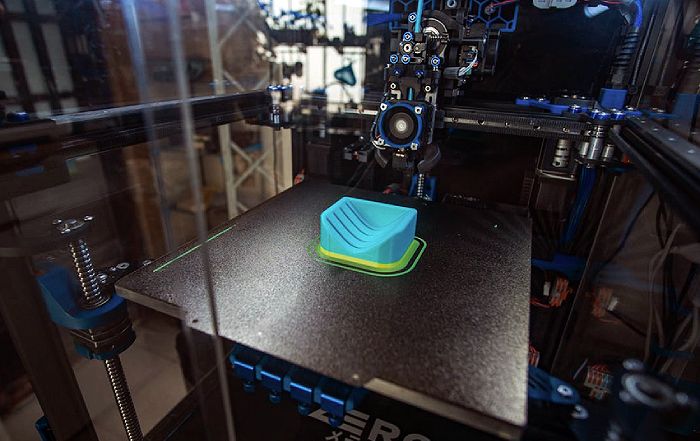A 2026 Perspective on US Government Shutdown Risk and Global Economic Confidence
Introduction: Why Shutdown Risk Matters More in 2026
In early 2026, the possibility of another United States government shutdown is no longer viewed as an isolated political event but as a structural risk that shapes how households, investors, employers, and international partners assess the resilience of the US economy. The experience of repeated fiscal standoffs over the past decade, combined with lingering aftershocks from the pandemic era, higher-for-longer interest rates, and geopolitical fragmentation, has made the threat of a funding lapse a central concern for decision-makers across North America, Europe, Asia, and beyond. For the professional audience of usa-update.com, whose daily focus spans the economy, finance, jobs, business, international markets, energy, and consumer behavior, the shutdown question is not merely about partisan politics in Washington; it is about whether the US can continue to anchor a volatile global system while managing its own domestic vulnerabilities.
The macroeconomic backdrop in 2026 is more complex than in earlier shutdown episodes. The labor market, while still relatively tight compared with pre-2010 norms, has cooled from its post-pandemic peak, with job openings normalizing and wage growth moderating. Inflation has subsided from the highs of 2022-2023, but price levels remain elevated, keeping pressure on household budgets and corporate margins. Consumer confidence has become more fragile and more responsive to political shocks, as many Americans feel they have less financial cushion than they did earlier in the decade. Globally, major economies such as China, the European Union, Japan, India, and Brazil are recalibrating their growth models and reassessing their exposure to US fiscal and monetary policy decisions.
Against this backdrop, a government shutdown-or even the credible threat of one-can trigger a chain of reactions that extends from furloughed federal employees in Washington, D.C. and defense contractors in Texas, to small manufacturers in Germany, technology exporters in South Korea, commodity suppliers in South Africa, and financial centers in London, Singapore, and Zurich. Understanding these linkages is central to the mission of usa-update.com, whose Economy coverage and Business reporting increasingly focus on how domestic policy uncertainty intersects with global trade, capital flows, and employment trends.
How a Shutdown Works in Practice
A US government shutdown occurs when Congress and the White House fail to enact appropriations bills or a continuing resolution to fund federal agencies. Under the Antideficiency Act, most federal departments must cease non-essential operations when funding lapses. Essential functions-national security, certain public safety roles, air traffic control, and core benefit processing-continue, but hundreds of thousands of federal workers are either furloughed or required to work without immediate pay, and a wide range of services are suspended or curtailed.
The economic consequences operate through multiple channels. Directly, federal employees lose near-term income and may cut back on discretionary spending. Indirectly, contractors experience delayed payments and project suspensions, which can lead to layoffs, reduced investment, and cash-flow stress for small and mid-sized firms. At a macro level, the Congressional Budget Office has historically estimated that shutdowns shave tenths of a percentage point off quarterly GDP, with some of the lost output recaptured later when back pay is disbursed. Yet that narrow accounting understates the broader damage to confidence, planning, and long-term credibility.
In 2026, the mechanics of a shutdown intersect with a more digitized and interconnected economy than in past episodes. Delays in regulatory approvals, research funding, infrastructure grants, and data releases can disrupt sophisticated supply chains and financial models that depend on timely government information. Investors, for instance, increasingly rely on releases from the Bureau of Labor Statistics, the Census Bureau, and the Federal Reserve to calibrate positions; interruptions to these data streams complicate risk management and can heighten volatility. For ongoing context on how fiscal operations interact with markets and policy, readers turn regularly to usa-update.com's Finance section and Regulation coverage.
Consumer Confidence: The Fragile Center of US Demand
Household consumption remains the primary driver of US GDP, and in 2026, the resilience of consumer spending is one of the most closely watched indicators on Wall Street, at the Federal Reserve, and among global institutions such as the International Monetary Fund. After several years of elevated inflation, many households have exhausted excess savings built up during the pandemic and are more exposed to income shocks and interest rate changes. Surveys from organizations like the Conference Board and the University of Michigan have shown that confidence is highly sensitive to political headlines, including shutdown brinkmanship and debt ceiling debates.
A funding lapse amplifies existing anxieties. Furloughed workers, delayed benefit checks, and uncertainty about the continuity of programs such as nutrition assistance, housing vouchers, and small-business support all contribute to a more cautious consumer mindset. Even those not directly affected may delay major purchases-homes, vehicles, appliances, travel-because they perceive greater macroeconomic risk. This behavioral response can quickly translate into weaker sales for retailers, automakers, homebuilders, and service providers. Analyses from institutions like the Federal Reserve Bank of St. Louis and the Brookings Institution have consistently highlighted how confidence shocks can have outsized effects when households already feel financially stretched.
For the readership of usa-update.com, consumer sentiment is not an abstract index; it is a daily reality reflected in the performance of retailers, credit card delinquencies, housing turnover, and demand for leisure and entertainment. The Consumer section of usa-update.com regularly explores how political uncertainty, inflation expectations, and labor market conditions shape household behavior, and a potential shutdown in 2026 would be analyzed through precisely this lens of real-world impact on spending, saving, and lifestyle choices.
Labor Market Dynamics in a Cooling Economy
The US labor market entering 2026 is characterized by a gradual normalization from the tight conditions of 2021-2023. The Bureau of Labor Statistics reports that job openings have come down from record highs, quit rates have eased, and wage growth has decelerated, even as unemployment remains historically low by long-term standards. High-growth sectors such as technology, healthcare, and advanced manufacturing continue to hire, but often at a more measured pace, while interest-rate-sensitive industries, including construction and certain segments of retail and logistics, face headwinds.
A government shutdown interacts with these trends in several ways. Federal workers, numbering roughly 2 million civilians, face delayed pay, while contractors across defense, aerospace, IT services, engineering, and consulting may see projects paused or canceled. The Office of Personnel Management and agencies like the Department of Defense and Department of Homeland Security must implement contingency staffing plans, which can disrupt operations even in essential functions. Private employers, observing the uncertainty, may delay hiring decisions or expansion plans, compounding the cooling effect.
For regions with high concentrations of federal employment-such as the Washington, D.C. metro area, parts of Maryland and Virginia, and communities near major military installations across the United States-the localized employment impact can be acute. Restaurants, retailers, and service providers that rely on federal paychecks see immediate declines in traffic. Over time, if shutdowns become recurrent, talented professionals may reconsider careers in public service, undermining the government's ability to recruit and retain skilled workers in fields like cybersecurity, data science, and engineering, just as those capabilities are becoming strategically vital.
The labor market implications are a core focus for usa-update.com, whose Jobs and Employment coverage track not only headline employment numbers but also wage trends, sectoral shifts, remote work patterns, and reskilling initiatives. In 2026, readers are particularly attentive to how political disruptions intersect with broader structural changes in work, including automation, artificial intelligence adoption, and the growth of the gig economy.
Financial Markets and the Signal of Fiscal Dysfunction
Global financial markets interpret a US government shutdown as a signal about the quality of American governance and the reliability of US fiscal institutions. Historically, shutdown episodes have produced short-term volatility in equity markets, modest movements in Treasury yields, and shifts in currency valuations, as investors reassess risk and seek safe havens. The US dollar, despite periodic challenges, remains the dominant reserve currency, and US Treasuries continue to be viewed as benchmark safe assets, yet recurring fiscal standoffs test that perception.
In 2026, this sensitivity is heightened by an environment of elevated public debt, tighter monetary policy, and geopolitical competition. Central banks such as the European Central Bank, the Bank of England, the Bank of Japan, and the People's Bank of China all monitor US fiscal developments closely, as they influence global liquidity, exchange rates, and capital flows. A shutdown that overlaps with debates over the debt ceiling or long-term deficit reduction can raise questions about the willingness-not just the technical ability-of the US political system to manage its obligations responsibly.
Market participants increasingly rely on guidance from institutions like the Federal Reserve, the US Treasury, and international bodies such as the Bank for International Settlements to interpret the implications of US fiscal events. When these institutions must operate in a context of political brinkmanship, their communication challenge intensifies. For professional readers of usa-update.com, whose decisions often involve asset allocation, risk hedging, and cross-border investment strategies, understanding the interplay between shutdown risk, interest-rate expectations, and global capital flows is critical. The Finance section and International coverage on the site regularly examine these linkages, providing context that goes beyond daily market moves.
International Repercussions: Trust, Trade, and Strategic Alignment
The United States remains the largest economy in the world and a central node in global trade and finance. For partners and competitors in Europe, Asia, South America, Africa, and Oceania, the reliability of US governance is a key input into strategic planning. A government shutdown sends a message, not only about short-term budget disagreements, but about the deeper capacity of the US political system to deliver stable policy in areas ranging from defense and climate to trade and technology standards.
Export-oriented economies-such as Germany, Japan, South Korea, Mexico, Canada, and China-are particularly exposed to fluctuations in US demand. When American consumers and businesses cut back spending due to uncertainty, manufacturing hubs in Europe and Asia feel the impact through order books, production schedules, and employment. Commodity exporters in countries like Brazil, South Africa, and Australia face similar vulnerabilities when US industrial activity slows or when global risk aversion reduces investment in emerging markets. Organizations such as the World Bank and the OECD frequently highlight how US fiscal events can propagate through trade and financial channels to affect growth in developing and advanced economies alike.
There is also a strategic dimension. Allies in NATO, partners in the Indo-Pacific, and participants in regional trade agreements look to Washington for leadership on security, supply chain resilience, and technological cooperation. Repeated shutdowns, especially when they affect defense operations, foreign aid, or diplomatic missions, can weaken perceptions of US reliability and encourage diversification of partnerships. For example, European efforts to deepen strategic autonomy, Asian initiatives to build regional financial safety nets, and the expansion of forums like BRICS all gain momentum when US governance appears unpredictable.
For usa-update.com, which serves readers with interests across International, Economy, and Energy, the global implications of shutdown risk are core to coverage. The site's reporting situates US events within a broader map of shifting alliances, trade patterns, and investment flows, recognizing that business leaders in New York, London, Frankfurt, Singapore, Toronto, and São Paulo are all watching Washington's fiscal decisions with increasing concern.
Sector-by-Sector Exposure in 2026
Retail, Entertainment, and Lifestyle
The retail and entertainment sectors act as immediate barometers of consumer sentiment. Major retailers and platforms such as Walmart, Target, Costco, and Amazon, along with streaming services, cinemas, and live event organizers, see rapid changes in demand when households adjust discretionary spending. A shutdown that interrupts paychecks or benefits prompts many families to postpone non-essential purchases and leisure activities, impacting everything from apparel and electronics to concerts and theme parks.
In 2026, the integration of e-commerce, subscription services, and digital entertainment means that even modest shifts in monthly budgets can have measurable effects on corporate revenues and valuations. Lifestyle choices-travel, dining out, wellness services, and cultural events-are often the first areas where consumers cut back in response to uncertainty. Analysts at organizations like McKinsey & Company and Deloitte have observed that post-pandemic consumers are more value-conscious and more willing to switch brands or platforms when economic conditions tighten.
The Entertainment and Lifestyle sections of usa-update.com increasingly explore how political developments, including shutdown risk, influence demand for experiences, content, and consumer brands. For businesses in these sectors, understanding the timing and intensity of such demand shifts is essential for inventory planning, pricing strategies, and marketing campaigns.
Housing, Mortgages, and Real Estate Finance
The housing market in 2026 remains shaped by the legacy of rapid price increases earlier in the decade and the subsequent rise in mortgage rates as the Federal Reserve tightened policy to combat inflation. Affordability challenges are acute in many metropolitan areas across the United States, from coastal cities to fast-growing Sun Belt markets. Government-backed mortgage programs administered by the Federal Housing Administration, the Department of Veterans Affairs, and entities like Fannie Mae and Freddie Mac play a pivotal role in enabling homeownership for millions of households.
During a shutdown, processing of many new FHA and VA loans is delayed, and some housing-related services-such as certain Internal Revenue Service income verification processes-may be disrupted. Prospective buyers relying on these channels can see closings postponed, which affects real estate agents, builders, title companies, and local service providers. For existing homeowners employed by the federal government or contractors, a temporary loss of income can create stress in meeting mortgage payments, prompting lenders and servicers to consider forbearance or hardship arrangements.
Real estate investors and analysts, including those following research from the National Association of Realtors and the Urban Institute, pay close attention to how political events affect transaction volumes, construction activity, and financing conditions. On usa-update.com, housing is covered through the lens of Economy and Finance, recognizing that property markets are both a driver and a reflection of broader economic health.
US Shutdown Risk Impact Dashboard 2026
Interactive analysis of economic exposure by sector
Consumer & Retail
CriticalImmediate discretionary spending decline, delayed purchases
Housing & Real Estate
HighFHA/VA loan processing delays, mortgage verification disrupted
Financial Markets
Moderate-HighMarket volatility, data disruptions, governance signals
Energy & Infrastructure
ModeratePermitting delays, grant disbursements postponed
Technology & Innovation
ModerateResearch funding delays, procurement decisions postponed
Shutdown Impact Timeline
Day 1-3: Immediate Impact
Federal employees furloughed or working without pay. Consumer spending begins to decline. Stock market volatility increases. National parks and monuments close.
Week 1-2: Cascading Effects
Contractors experience payment delays and project suspensions. Housing loan processing stalls. Economic data releases interrupted. Business investment decisions postponed. Regional economies near federal installations suffer.
Week 3-4: Deepening Crisis
Small business cash-flow stress intensifies. Supply chain disruptions multiply. International confidence in US governance deteriorates. Travel and tourism sector sees booking cancellations. TSA staffing challenges emerge.
Beyond 1 Month: Structural Damage
GDP impact becomes significant (-0.2% per week). Talent recruitment to federal service undermines. International partners diversify away from US systems. Long-term credibility of US institutions questioned. Alternative reserve currencies gain traction.
Global Economic Ripple Effects
Regional Impact Assessment
Export-oriented manufacturers face reduced US demand. NATO allies question defense cooperation reliability. ECB monitors dollar volatility closely.
Supply chains disrupted by order cancellations. Technology exporters see semiconductor demand soften. Regional financial safety nets gain momentum.
NAFTA/USMCA trade flows interrupted. Commodity exporters face price volatility. Cross-border infrastructure projects delayed.
Capital flight risk increases. Currency depreciation pressures mount. Development assistance programs face interruptions.
Dollar reserve status gradually challenged. BRICS alternative payment systems accelerate. Strategic autonomy initiatives in Europe intensify. Global governance fragmentation deepens.
Data based on Congressional Budget Office estimates, Federal Reserve analysis, and international economic assessments for 2026 shutdown risk scenarios.
Travel, Tourism, and Mobility
The travel and tourism industry, encompassing airlines, hotels, cruise lines, car rental firms, and destination operators, is highly sensitive to disruptions in federal services. Agencies such as the Transportation Security Administration, the Federal Aviation Administration, and the National Park Service play critical roles in ensuring that the US remains a safe, accessible, and attractive destination for domestic and international travelers. In prior shutdowns, travelers have faced longer security lines, delays in aviation operations, and closures of national parks and monuments, all of which carry reputational costs.
In 2026, international tourism to the US has largely recovered from the pandemic, but travelers from Europe, Asia, South America, and Canada have more options and are increasingly attentive to perceived stability and service quality. Destinations in Spain, Italy, France, Thailand, and Australia compete aggressively for visitors, and any sign that US travel infrastructure may be compromised can shift bookings elsewhere. Industry groups like the US Travel Association and global bodies such as the World Travel & Tourism Council have repeatedly warned that policy-induced disruptions undermine long-term competitiveness.
The Travel section of usa-update.com examines how shutdown risk intersects with airline capacity planning, hotel investment, and destination marketing, providing insights for executives, investors, and workers in this critical segment of the service economy.
Energy, Infrastructure, and Climate Transition
The energy and infrastructure sectors are at the center of the US long-term growth and climate strategy. Federal agencies including the Department of Energy, the Environmental Protection Agency, and the Department of Transportation manage grants, loans, regulatory approvals, and oversight for projects ranging from renewable energy installations to highways, bridges, and public transit. The implementation of major legislative packages passed earlier in the decade has created a pipeline of investments in clean energy, grid modernization, and climate resilience.
A shutdown interrupts many of these processes. Permitting timelines lengthen, grant disbursements are delayed, and regulatory reviews slow, all of which can affect the economics of projects that depend on predictable schedules and financing. Developers of wind farms in the Midwest, solar facilities in the Southwest, battery plants in the Southeast, and transmission lines across multiple states all face increased uncertainty in such an environment. Global investors, including sovereign wealth funds and infrastructure funds based in Norway, Singapore, Canada, and the United Arab Emirates, watch these developments closely when allocating capital.
For usa-update.com, whose Energy coverage and Regulation insights follow the evolution of US climate and infrastructure policy, shutdown risk is analyzed not only as a short-term disruption but as a potential drag on the country's ability to compete in the global race for clean technology leadership, where China, Germany, and Denmark have been particularly active.
Technology, Innovation, and Strategic Competition
The technology sector remains a cornerstone of US economic strength and global influence. Companies such as Apple, Microsoft, Alphabet, Amazon, NVIDIA, and a broad ecosystem of startups and mid-sized firms drive innovation in artificial intelligence, cloud computing, semiconductors, cybersecurity, biotechnology, and advanced manufacturing. Federal agencies including NASA, the National Science Foundation, the National Institutes of Health, and the Department of Defense provide crucial research funding, procurement contracts, and collaboration opportunities that underpin the innovation pipeline.
When a shutdown occurs, new grant awards are delayed, some research facilities may scale back operations, and procurement decisions are postponed. University labs and research institutions, which often rely on multi-year federal funding commitments, can face staffing and planning challenges. In the context of intensifying strategic competition with China, South Korea, Japan, and Singapore, any interruption to the US innovation ecosystem carries long-term implications for global technology leadership. Analyses from organizations like the Council on Foreign Relations and the Carnegie Endowment for International Peace have underscored how domestic political dysfunction can weaken the US position in setting standards and norms in emerging technologies.
The Technology section of usa-update.com is increasingly focused on this intersection of policy, geopolitics, and innovation, providing readers with a nuanced understanding of how shutdown risk may influence the trajectory of AI, quantum computing, cybersecurity, and other transformative fields.
Long-Term Confidence, the Dollar, and Global Governance
Beyond the immediate economic and sectoral impacts, the most consequential effect of recurring shutdowns may be the gradual erosion of trust in US governance and, by extension, in the institutions that rely on American leadership. The US dollar remains preeminent in global reserves, trade invoicing, and cross-border finance, but alternative arrangements are slowly expanding. Initiatives such as the development of a digital euro, efforts by China to internationalize the renminbi, and discussions within the BRICS grouping about alternative settlement mechanisms all reflect a desire to reduce single-point dependency on US policy decisions.
Institutions like the International Monetary Fund, the World Trade Organization, and the G20 depend on constructive US engagement to function effectively. When Washington is preoccupied with domestic fiscal brinkmanship, its capacity to shape global rules on trade, taxation, digital governance, and climate finance is diminished. Over time, this can lead to a more fragmented international system, with regional blocs in Europe, Asia, and the Americas pursuing divergent standards and frameworks.
For investors and executives in North America, Europe, Asia-Pacific, and emerging markets, the question is not whether the US will remain central to the global economy-it will-but whether its leadership will be steady enough to justify continued concentration of risk. The professional audience of usa-update.com follows this debate closely through International, Economy, and Finance coverage, recognizing that strategic decisions on supply chains, capital allocation, and market expansion increasingly factor in assessments of US political stability.
Strategic Considerations for 2026 and Beyond
As 2025's fiscal debates roll into 2026, businesses, workers, and policymakers confront a set of interrelated questions: how to plan in an environment where shutdown risk remains non-trivial; how to sustain investment and innovation amid political volatility; and how to preserve the United States' role as a trusted anchor of the global system.
For businesses operating across sectors-from manufacturing and technology to retail, energy, and financial services-the emphasis has shifted toward resilience. Diversifying revenue streams, strengthening balance sheets, investing in digital capabilities, and building more flexible supply chains are no longer optional strategies but core components of risk management. Firms with exposure to federal contracts or heavily regulated areas must pay close attention to legislative calendars and appropriations debates, often using scenario planning and stress testing informed by analysis from think tanks, consultancies, and financial institutions.
Workers, meanwhile, face the dual challenge of navigating cyclical risks like shutdowns and structural shifts driven by technology and globalization. Lifelong learning, digital literacy, and adaptability across industries have become essential attributes. Public and private reskilling initiatives, including those supported by community colleges, universities, and corporate training programs, play a vital role, but their effectiveness can be undermined if funding is disrupted or if policy uncertainty discourages long-term planning. usa-update.com addresses these themes in depth through its Employment and Jobs reporting, offering readers insight into emerging roles, wage dynamics, and geographic shifts in opportunity.
Policymakers themselves face mounting pressure from business leaders, labor organizations, and international partners to reduce the frequency and severity of fiscal crises. Proposals for automatic continuing resolutions, reforms to the debt ceiling, and multi-year budget frameworks are gaining attention in Washington, as analysts at institutions like the Peterson Institute for International Economics and the Center for Strategic and International Studies highlight the systemic risk posed by repeated shutdowns. Whether these reforms advance will be a key determinant of how global markets and governments assess US reliability over the coming decade.
Conclusion: The Role of usa-update.com in a Volatile Era
In 2026, the risk of a US government shutdown cannot be viewed in isolation from broader trends in the economy, labor markets, technology, and geopolitics. It is one manifestation of a deeper question: can the United States sustain the institutional stability and policy coherence required to lead in an era of rapid change and rising competition? For business leaders, investors, workers, and policymakers across the United States, Canada, Europe, Asia, South America, Africa, and Oceania, the answer to that question will shape decisions on investment, hiring, innovation, and strategic alignment for years to come.
usa-update.com positions itself as a trusted platform for navigating this complexity. By integrating coverage across Economy, News, Finance, Business, International, Energy, Consumer, and Employment, the site offers a holistic view of how fiscal events like potential shutdowns intersect with the daily realities of markets, companies, and households.
As the United States moves through 2026 and beyond, the stakes attached to each fiscal negotiation will remain high, not only for Washington insiders but for communities and boardrooms from New York and Los Angeles to London, Berlin, São Paulo, Johannesburg, Singapore, Seoul, Tokyo, and Sydney. The evolution of shutdown risk, and the broader question of US governance credibility, will continue to be a defining storyline-one that usa-update.com will follow closely, providing its readers with the depth, context, and analysis needed to make informed decisions in an uncertain world.










